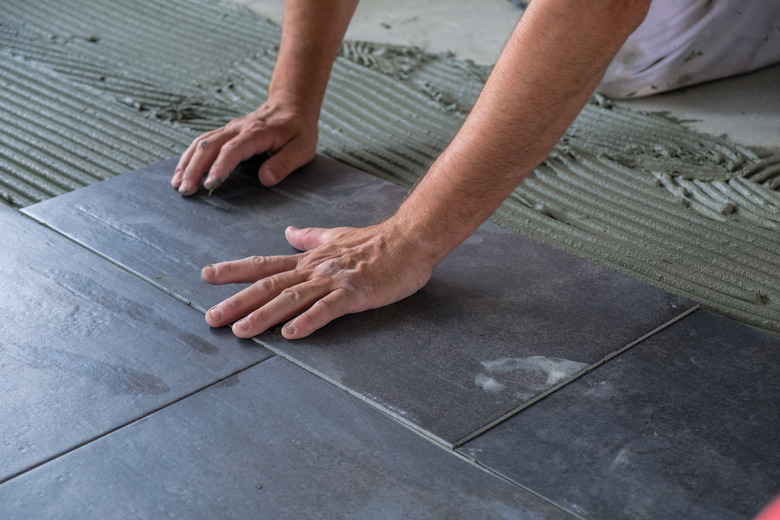How Long Before Floor Tiles Get Loose After Water Damage?
If your home has been exposed to flood or water damage, it is essential to clean up after the event as soon as possible. If the floor remains damp over a period of time (as a result of contaminated flood water), bacteria and mold growth can quickly develop, and tiles may loosen.
Tip
If you have any wood in your flooring or subflooring, you may not notice any tile looseness or floor separation until the wood is completely dry, which can be several weeks or months. Grout can also crack or deteriorate in a flood, so have your floor checked for damage as soon after the flood as possible.
Quick Response Is Best
Quick Response Is Best
Although ceramic tile normally withstands water or flood damage fairly well, water can be "wicked" into walls or subflooring to which the tile is attached. Quick attention to water removal can help reduce the amount of water absorbed by walls or the wooden subfloor.
Use fans to increase air movement and provide cross ventilation until these materials are completely dry. You should expect it to take several weeks to dry the floor thoroughly, according to Texas A&M Extension. If you have asbestos tiles, however, they should only be removed by a trained professional.
Flood Damage to Your Floor
Flood Damage to Your Floor
If your home has been flooded, floor tiles may come loose. Standing water does not damage ceramic floor tiles. However, it damages the grout between the tiles, loosens tile adhesive and saturates the subfloor. The subfloor may be particle board or plywood sheet. The wood soaks up the water and expands, causing the tile floor to buckle or tiles to become loose. Damage may not become evident for several weeks or months after the flood waters have subsided.
However, if you have wood floors, laminate, vinyl, or any flooring or subflooring that includes wood or wood pulp, it is likely you will have to replace them. Wood doesn't hold up well to flooding, according to the Ceramic Tile Education Foundation.
After a flood, grout can crack or deteriorate even in well-designed tile flooring, so have your tile floors checked when floodwaters recede for any weakness that may cause the tiles to come loose from the grout.
Slow Leaks Cause Similar Problems
Slow Leaks Cause Similar Problems
A slow leak, from a dripping pipe or from a malfunctioning dishwasher or washing machine, may have existed for some time before the homeowner notices the leak and the problem is repaired. The leak may have been small enough that a plywood or particle board subfloor soaked up the water.
Dark staining or mold may appear before tiles become loose. Damage from a slow leak may not be evident for several months or even years.
Condensation May Occur
Condensation May Occur
If the installer used a water-based mortar adhesive, exposure to moisture can cause the adhesion to fail after a period of time. Condensation or excessive humidity can soften the adhesive, and it may not appear loose until heavy foot traffic or furniture movement causes a tile to shift, become loose or break.
Tiles installed on a concrete slab will stand up to flood or water damage better than tiles installed on a wooden subfloor that can absorb water.
Extreme Temperature Changes
Extreme Temperature Changes
Extreme changes in temperature can contribute to tiles becoming loose and breaking. As humidity and heat build up in the structure, condensation develops and can cause moisture to permeate the grout around the tile. Cold weather can cause the dampened subfloor to contract and cause tiles to "tent" or break loose.
Tile should not become loose if the floor was properly installed with expansion joints. Expansions or "soft joints" are period joints composed of latex caulking that expands and contracts when exposed to moisture or temperature extremes.
